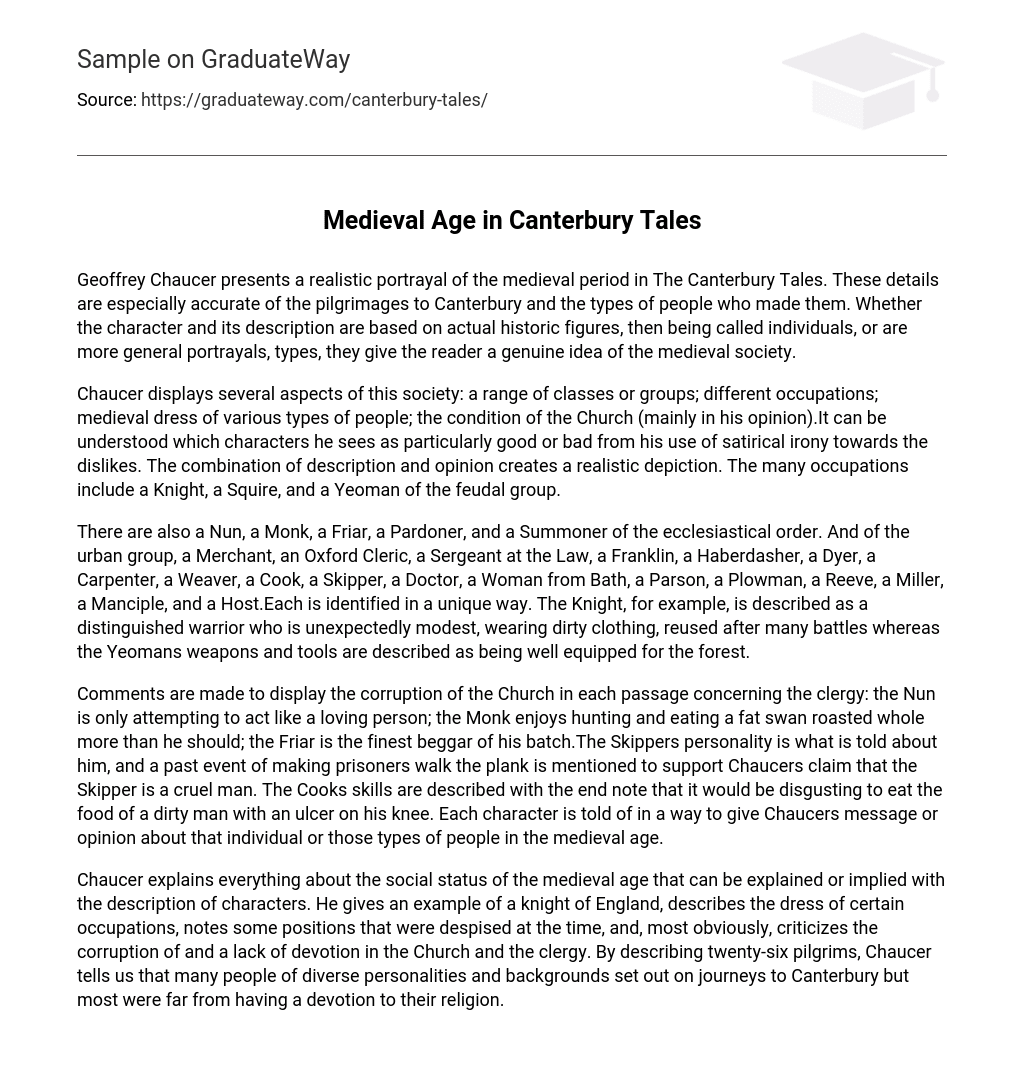In The Canterbury Tales, Geoffrey Chaucer offers an authentic depiction of the medieval era, particularly concerning the journeys to Canterbury and the individuals who embarked on them. Whether these characters and their descriptions are inspired by real historical figures and referred to as individuals, or are more generalized portrayals representing types, they provide readers with an authentic understanding of medieval society.
Chaucer presents multiple aspects of society in his work: the presence of various classes and groups, different occupations, the depiction of medieval attire worn by different individuals, and the portrayal of the state of the Church (largely influenced by his own perspective). Through his use of satirical irony, it is evident which characters he views as exceptionally virtuous or objectionable. This blend of description and opinion results in an authentic portrayal. Among the numerous occupations depicted are a Knight, a Squire, and a Yeoman from the feudal cohort.
There are various members of both the ecclesiastical order and the urban group depicted in the text. These include a Nun, a Monk, a Friar, a Pardoner, and a Summoner from the ecclesiastical order. Additionally, there is a Merchant, an Oxford Cleric, a Sergeant at the Law, a Franklin, a Haberdasher, a Dyer, a Carpenter, a Weaver, a Cook, a Skipper, a Doctor, a Woman from Bath, a Parson, a Plowman, a Reeve, a Miller, a Manciple, and a Host from the urban group. Each character is uniquely portrayed. For instance, the Knight is described as an esteemed warrior who surprisingly appears modest and wears worn-out clothing from numerous battles. On the other hand, the Yeoman’s weapons and tools are said to be well-equipped for the forest.
The text comments on the corruption of the Church in each passage regarding the clergy. The Nun is portrayed as pretending to be loving, while the Monk is depicted as enjoying hunting and eating a whole roasted swan excessively. Additionally, the Friar is praised as the best beggar among his peers. The Skipper’s personality is described, and a past event of him forcing prisoners to walk the plank is mentioned as evidence of his cruelty. The Cook’s skills are emphasized, but it is noted that it would be unpleasant to eat food prepared by a dirty man with a knee ulcer. Overall, Chaucer uses each character’s portrayal to express his message or opinion about individuals and certain groups of people in the medieval era.
Chaucer provides a comprehensive portrayal of the social hierarchy during the medieval era through his character descriptions. He exemplifies this through the depiction of an English knight, the attire of various occupations, the mention of despised positions, and also, notably, his critique of corrupt and unfaithful practices within the Church and clergy. Through the depiction of twenty-six pilgrims, Chaucer highlights that numerous individuals from diverse backgrounds embarked on trips to Canterbury; however, it is evident that their commitment to their religious beliefs was lacking.





